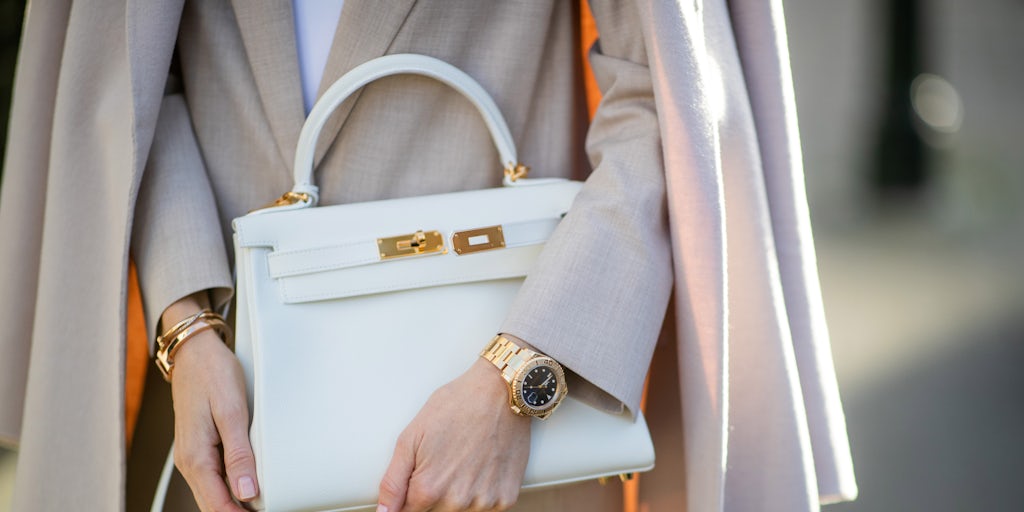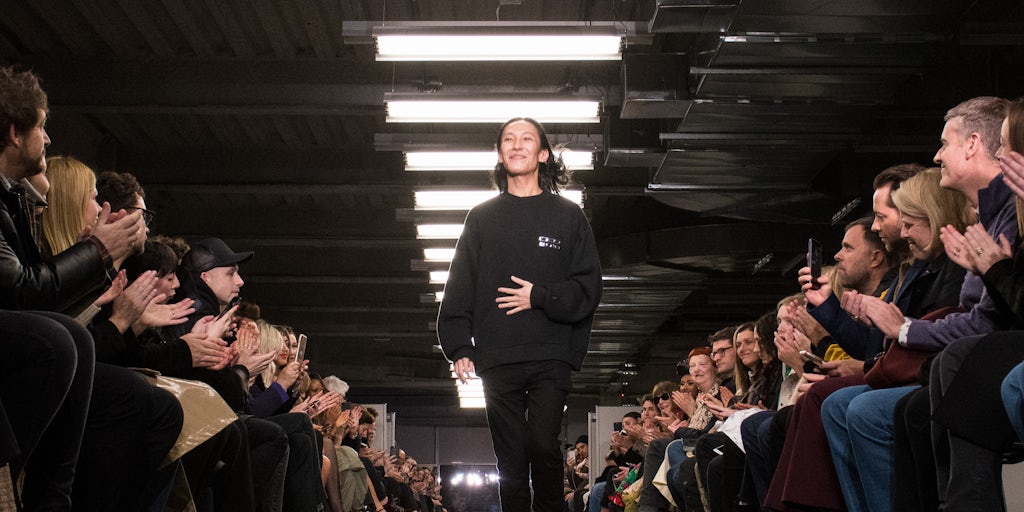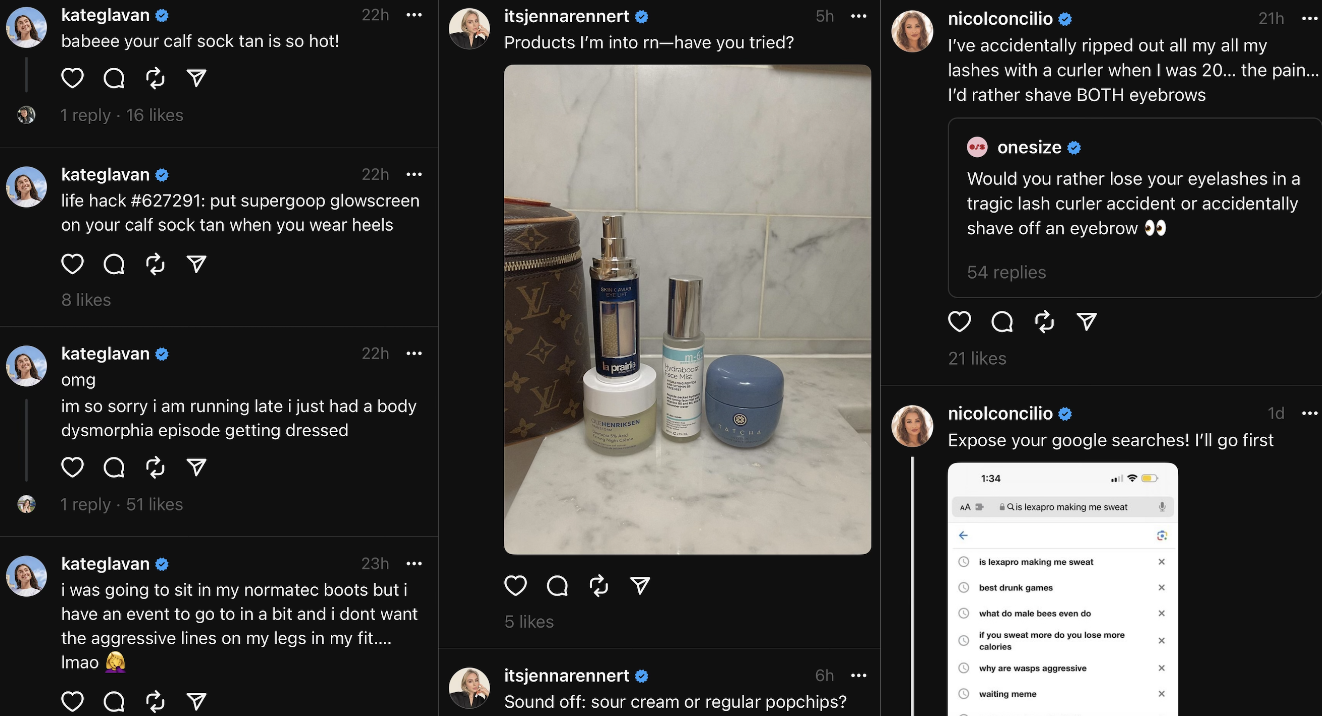Risky Territory on the Horizon for European Luxury Companies
DUSSELDORF, GERMANY – FEBRUARY 05: (EDITORS NOTE: Image has been digitally enhanced.) Alexandra Lapp is seen wearing Hermes Kelly bag 28 in white, RIANI suit in beige, RIANI t-shirt in white, RIANI cashmere coat in beige, Rolex vintage Yachtmaster (Yacht-Master Yellow Gold 40 mm double dial) and Tiffany T Square bangle in rose-gold, white Hermes bag on February 05, 2021 in Dusseldorf, Germany. (Photo by Christian Vierig/Getty Images)
Europe’s purveyors of luxury are heading into risky territory.
Stellar earnings, M&A speculation and the promise of post-lockdown demand have sent shares of companies like LVMH and Hermès International rocketing to all-time highs, giving them multiples far richer than the Nasdaq 100. Their average price-to-earnings premium to Wall Street’s tech-heavy benchmark hit a record of 29 percent this month, and is prompting some investors to question how much more steam their rally has.
Yes, the sector still has a lot going for it. Consumers flush with cash after almost 18 months of on-again-off-again lockdowns may be ready to splurge on a Louis Vuitton bag or a Hermès scarf or a Chanel jacket. Also, luxury’s ability to command top dollar for its wares remains intact and affluent Chinese clients still hanker after coveted European brand names. But that hasn’t stopped investors from being concerned about the fat multiples.
“These companies are Amazon-proof, they know how to protect their brands,” said Martyn Hole, equity investment director at Capital Group, which has an overweight position in luxury stocks. “The one thing we are worrying about is valuations.”
The MSCI Europe Apparel and Luxury Goods Index has risen 20 percent this year, outperforming the MSCI Europe’s 12 percent gain and giving it a PE ratio of 35 times estimated 2021 earnings. The surge has taken the sector’s valuation premium relative to the broader market above 100 percent, a historic high.
For Barclays Plc strategists, that places luxury stocks in the very-expensive category, with little room for upside in the second half of the year. UBS Group AG analyst Zuzanna Pusz said that while the earnings season that just ended was “great,” people “ask themselves ‘what’s next?’”
The sector’s frenzy is not confined to stocks. This month, Italian luxury fashion retailer Golden Goose drew enough interest to sell a 480 million-euro ($588 million) six-year junk bond, with investors betting on its ability to sell high-end sneakers for around 400 euros.
Much attention is focused on the new drivers for luxury, like stimulus checks in the U.S., the casual-wear that’s proving popular even as workers return to offices and the 700 billion euros in excess savings Europeans are estimated to have squirrelled away because of the pandemic, waiting to be unleashed.
“We are in the days where the expensive gets even more expensive but for good reasons,” said Michel Keusch, a portfolio manager at Bellevue Asset Management AG. “In a scenario of reopening economies, people want to treat themselves and buy things that will make them look good. We still see upside.”
Underestimated Risks
Still, the stimulus won’t last forever, and as economies reopen people will have a wide range of spending options, from travel and restaurants to theatres and cinemas. Luxury goods may not be the top beneficiaries.
Two other elements that investors need to worry about are the overplaying of the M&A card and the political question mark over China demand, luxury’s biggest growth engine.
German apparel maker Hugo Boss is trading at 43 times 2021 earnings amid M&A rumours, which may or may not pan out. Troubled Italian shoemaker Tod’s SpA soared 66 percent as speculation swirled that LVMH may snap it up. Never mind that that Founder and Chairman Diego Della Valle poured cold water on hopes it will be sold anytime soon.
Burberry Group Plc tumbled after concerns rose about a sales hit from Chinese calls for a boycott of foreign brands over their positions on the use of cotton from the contentious Xinjiang region.
“Luxury sector risks could be underestimated,” according to Francesca DiPasquantonio, an analyst at Deutsche Bank.
‘Irrational’ Humans
Investors have plenty of other options. The analyst consensus sees little return for the MSCI Europe Luxury Goods Index over the next 12 months compared with a 19 percent upside for stocks on the MSCI Europe Retail Index, particularly online retailers like Zalando SE.
Still, for all the hand wringing on the sector’s rich valuations, there are those who see newer growth engines, like China’s emerging shopping hotspot of Hainan that’s “through the roof,” said Sanford C. Bernstein analyst Luca Solca. Also with Europe’s dominance in all things luxury, from watches and jewels to clothes and super cars, “long term, the sector’s prospects are very good,” said Capital Group’s Hole.
The pandemic showed investors the “fundamental qualities” of luxury companies, including their strong pricing power and balance sheets, said UBS’s Pusz.
“This sector is beautiful in the sense of being irrational,” she said. “We don’t need these things, we buy them because they make us feel a certain way. Covid-19 didn’t change human nature. If anything, people are more willing to indulge themselves.”
By Albertina Torsoli and Michael Msika





